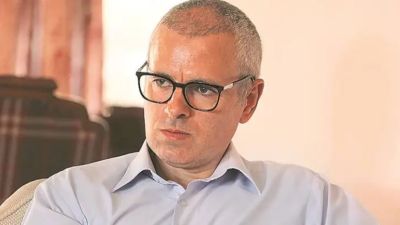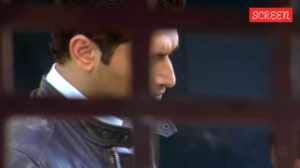Richard Edlund brings future to Mumbai
MUMBAI, JAN 15: For once, the Bollywood dream makers were held back in their seats as they watched spellbound some of the most breathtaki...

MUMBAI, JAN 15: For once, the Bollywood dream makers were held back in their seats as they watched spellbound some of the most breathtaking cinematic special effects of Hollywood FX wizard Richard Edlund.
Vinod Chopra, Ketan Mehta, Govind Nihalani, Ramesh Sippy, Vijay Anand and Umesh Mehra, and Bruce Davis, Executive Director of the Academy of Motion Pictures and Sciences were gripped by a spectacular nine-minute high-octane rollercoaster ride.
From Bruce Willis battling terrorists in Die Hard to marauding creatures in Alien 3, Species and Ghostbusters, Sylvester Stallone’s stunts in Cliffhanger, a visually stunning view of Jupiter in 2010 to four Michael Keatons seamlessly interacting in the cloning comedy Multiplicity the screen flickered alive.
Waving his wand on stage was special FX guru Richard Edlund who walked away with four Oscars for the mother of all sci-fi adventures Star Wars, Empire Strikes Back, Return of the Jedi and Raiders of the LostArk was speaking on, what else, `special effects in American movies’.
He explained to an audience listening in rapt attention the rapid strides that digital technology was making. “Did you know this sequence of attacking helicopters was entirely computer generated images (CGI)?”. Or that the Jupiter sequences from 2010 cost a staggering half a million dollars way back in 1984 and were put together using a Cray XMP Supercomputer.
Getting live Penguins to cooperate on a shoot for Batman Forever was proving to be extremely difficult. So Edlund took a single bird to the studio, recreated it digitally and filled the climax scene of the Bat pic with hundreds of computer generated images.
But this technology doesn’t come cheap, as Edlund knows. When he decided to switch over from optical to digital effects some five years ago, he had to abandon all his old equipment and go in for some 7 million dollars worth of new hardware. “Some of the newest technology hasn’t reached the theatres yet,”Edlund says.
The newest of these, changes the very movie theatre itself, he said. Imagine a movie hall where the prints didn’t have to come in clunky film cans but instead was beamed directly into the theatre’s electronic projectors via satellite. These encrypted satellite signals would also cut out movie pirates.
Advancements like electronic projectors would only serve to bring more people into theatres `to enjoy the collective emotion of a movie watching experience,’ Edlund put it in a reply to another FX-savvy director Ketan Mehta.
Presented by Screen weekly in association with CMM studios, today’s event was a run-up to the prestigious Fifth Annual Screen Videocon Awards to be held at the Andheri Sports Complex on Saturday.
Edlund continues. The special effects in Titanic, which cost an obscene 40 million dollars (or roughly the budget of all the five best Hindi film contenders at the Screen awards) recreated an entire ship and people digitally. “With every new breakthrough, audienceexpectation is rising,” Edlund said using examples of pathbreaking films like Star Wars, Jurassic Park and Toy Story.
With all these technological breakthroughs, as Edlund concludes, “The only thing that will stop us is the limits of our own imagination.”






- 01
- 02
- 03
- 04
- 05

























